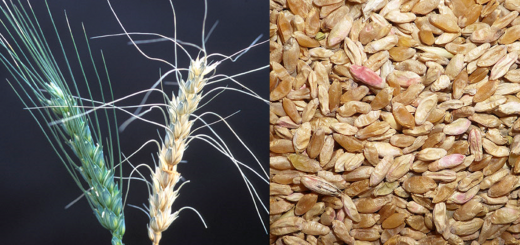#109: Rubroboletus satanas, Satan’s Bolete or Devil’s Mushroom
If you need a mushroom centerpiece for your Halloween party, then this is it. This large mushroom has a bulbous, bright red, reticulated base that easily invokes demonic fires (hence its common and scientific names). As a bonus, Satan’s Bolete has a fetid odor – quite fitting, don’t you think? Unfortunately, this mushroom is rather rare.
Rubroboletus satanas is shaped roughly like a short, fat table lamp: its pileus is hemispherical and its stipe is broadly flask-shaped. The mushroom’s pileus is its least impressive feature. It is 6-30cm (up to 1 foot!) wide, whitish, and slightly fuzzy. With age, the pileus becomes brownish, cracked, and often develops irregular lobes. The underside of the pileus is covered in small pores that are yellow to orange to red and bruise greenish. R. satanas’s stipe is its most striking feature. The stipe is 6-9cm tall and usually features a bulbous base, which can be 5-11cm wide. The top of the stipe connects to the center of the pileus and is yellow-orange to light yellow. As one moves down the stipe, the colors darken to red or brownish red at the base. The entire stipe is covered with red reticulation (a pattern of net-like ridges). On the inside, the mushroom’s flesh is whitish to pale yellow. All surfaces stain slowly blue when cut and eventually return to their original color. The mushroom produces greenish-brown spores. Older mushrooms develop an unpleasant odor.
R. satanas is actually the European version of Satan’s Bolete. The proper name for the North American Satan’s Bolete is Rubroboletus eastwoodiae (named after Alice Eastwood, who collected the mushrooms in the early 1900’s). R. eastwoodiae differs somewhat from its European counterpart. Our version features a dark red pore surface, always produces a stipe with a pronounced flask shape, displays pinkish colors on its stipe that fade with age, and has dark pink reticulation on the upper part of the stipe. Another similar species exists in North America: Rubroboletus pulcherrimus. This mushroom can be differentiated from R. eastwoodiae by its club-shaped stipe (the stipe does not abruptly narrow near the apex), its taller stature, and its prominent, red reticulations.
The European Satan’s Bolete can be found under oaks and beeches on chalky soil in the spring and fall. Both North American species are encountered only in California and possibly places northward. R. eastwoodiae prefers to fruit under oaks, especially Coast Liveoak, from late fall to early winter. R. pulcherrimus also appears in late fall and early winter, but fruits in mixed woods. Each of these mushrooms is mycorrhizal with its associated trees.
All three species are poisonous and cause gastrointestinal distress. There is one reported fatality associated with Satan’s Bolete, but that individual may have been quite sick beforehand. One toxin found in R. satanas – a glycoprotein named bolesatine – has been shown to inhibit protein synthesis. Some people are known to eat the mushroom after intensive parboiling, but I would recommend against trying this. Accidental poisonings resulting from these mushrooms are infrequent because their foul odor deters most people.
A note on the names: all three of these mushrooms were recently moved into the genus Rubroboletus or are in the process of being moved. As a result, many sources still list them as belonging to their previous genus, Boletus. See the MykoWeb page for R. eastwoodiae for more on the complicated naming history of the North American Satan’s Bolete.
See Further:
http://www.rogersmushrooms.com/gallery/DisplayBlock~bid~5654~gid~~source~gallerydefault.asp
http://www.first-nature.com/fungi/boletus-satanas.php
http://www.wildfooduk.com/mushroom-guides/satans-bolete-mushroom/
http://www.mykoweb.com/CAF/species/Rubroboletus_eastwoodiae.html
http://www.mykoweb.com/CAF/species/Rubroboletus_pulcherrimus.html








![#011: Characteristics of Kingdom Fungi [Archived]](https://www.fungusfactfriday.com/wp-content/themes/hueman/assets/front/img/thumb-small-empty.png)
